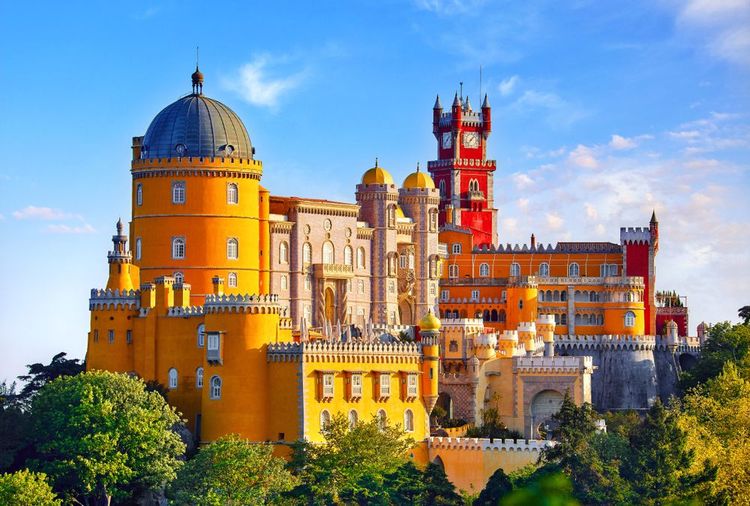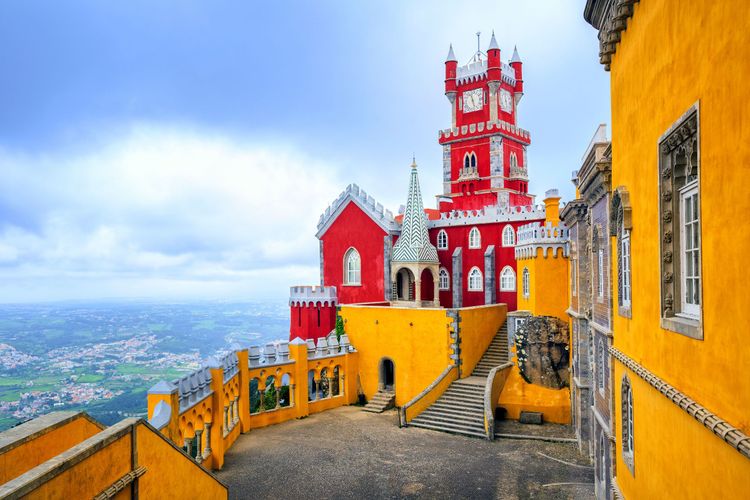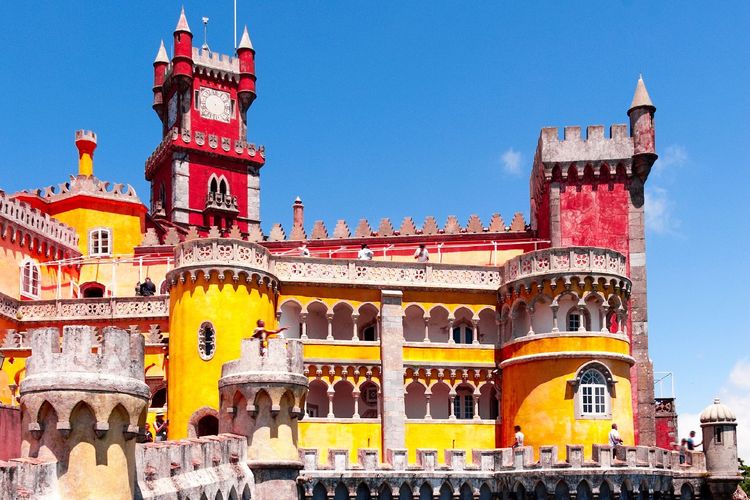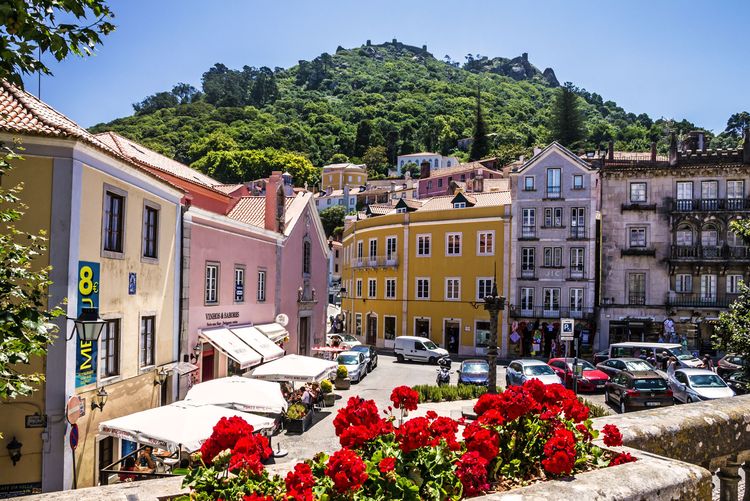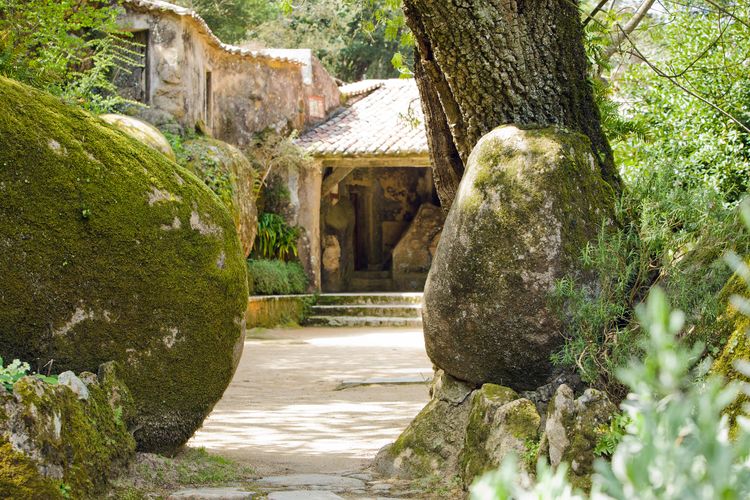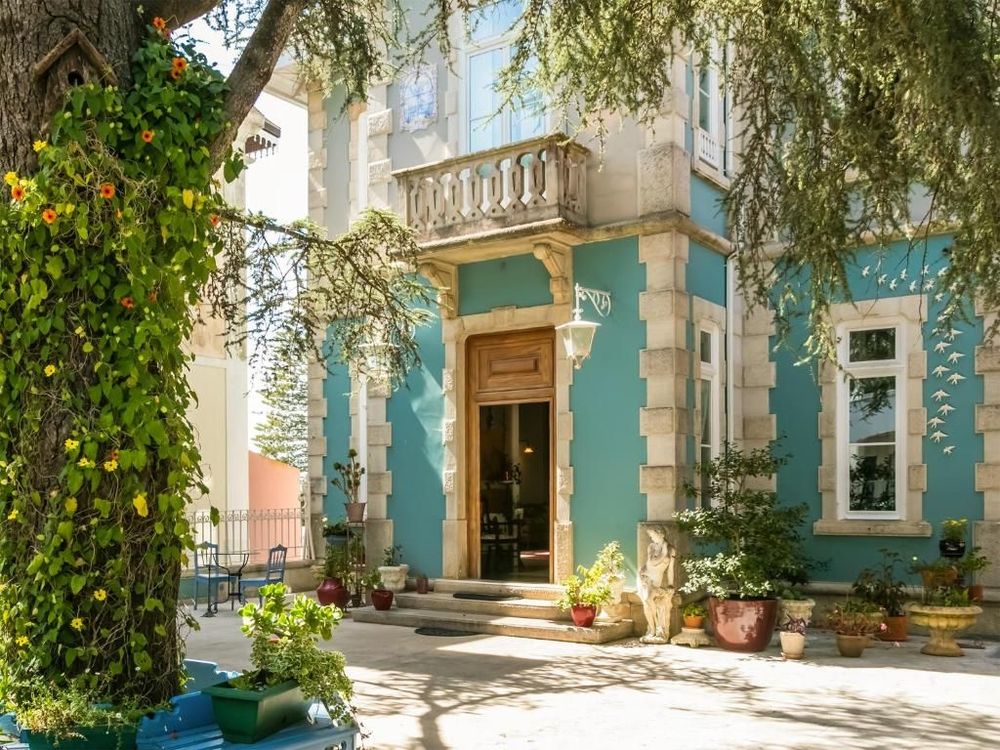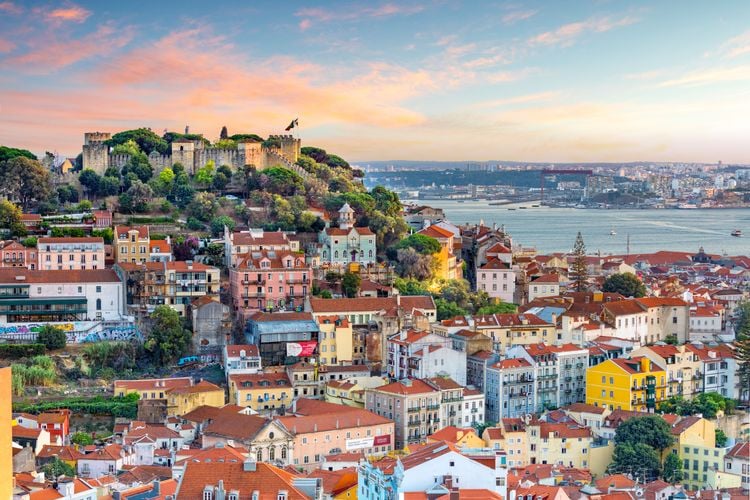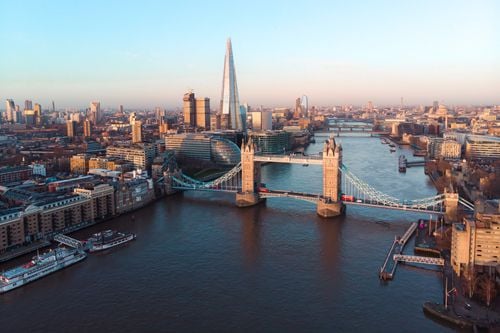Built on the ruins of a monastery, it blends different styles: Gothic, Moorish, Manueline and Renaissance, which gives it its unique character. Surrounding the palace, a magnificent park blends local and exotic species. But first, let us tell you the extraordinary story of this flamboyant hilltop castle.
To explain the origins of the Palacio Nacional de Pena, we have to go back to the twelfth century, when the castle was just a chapel dedicated to the Virgin Mary. In 1511, the chapel was converted into a monastery: Notre Dame de Pena. With its cloister, chapel, sacristy and bell tower, the monastery was occupied by a few monks for several centuries until the earthquake of 1755 reduced the building to a heap of ruins. It was finally abandoned in 1834. In 1838, King Fernando II of Portugal, Prince of Saxe-Coburg-Gotha, bought the ruins of the monastery and the surrounding land at auction.
